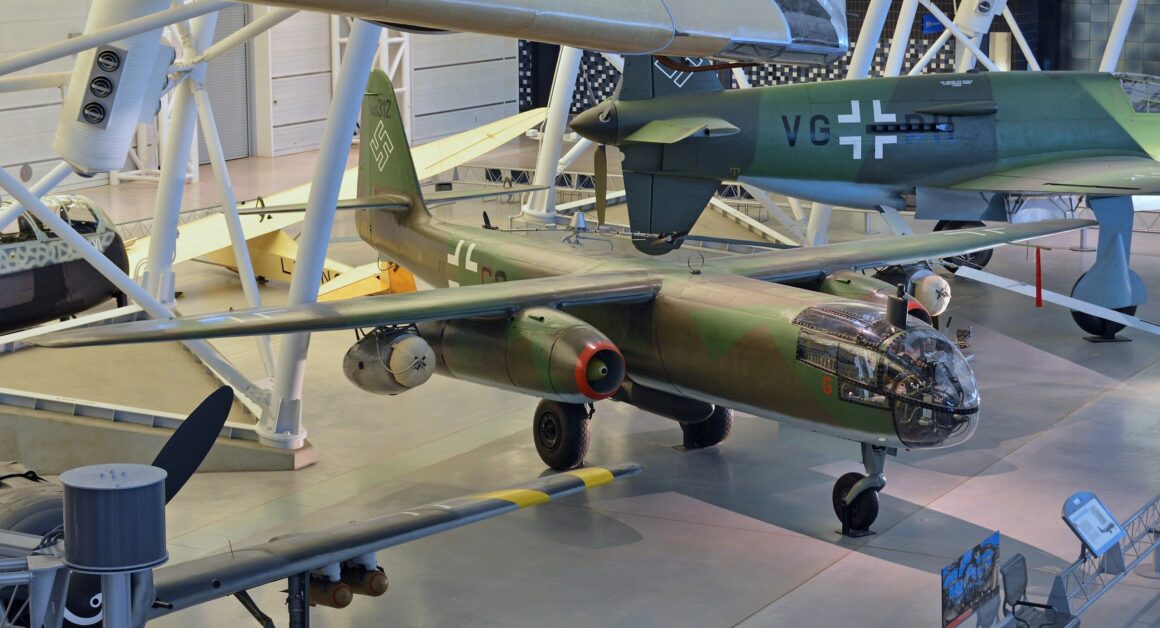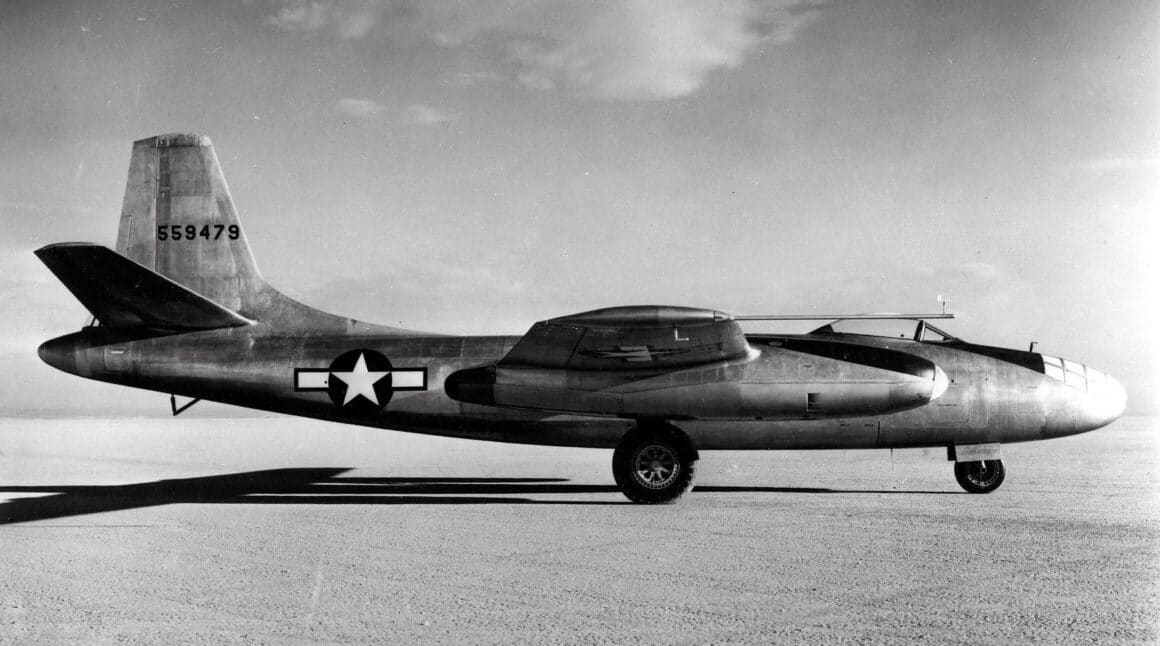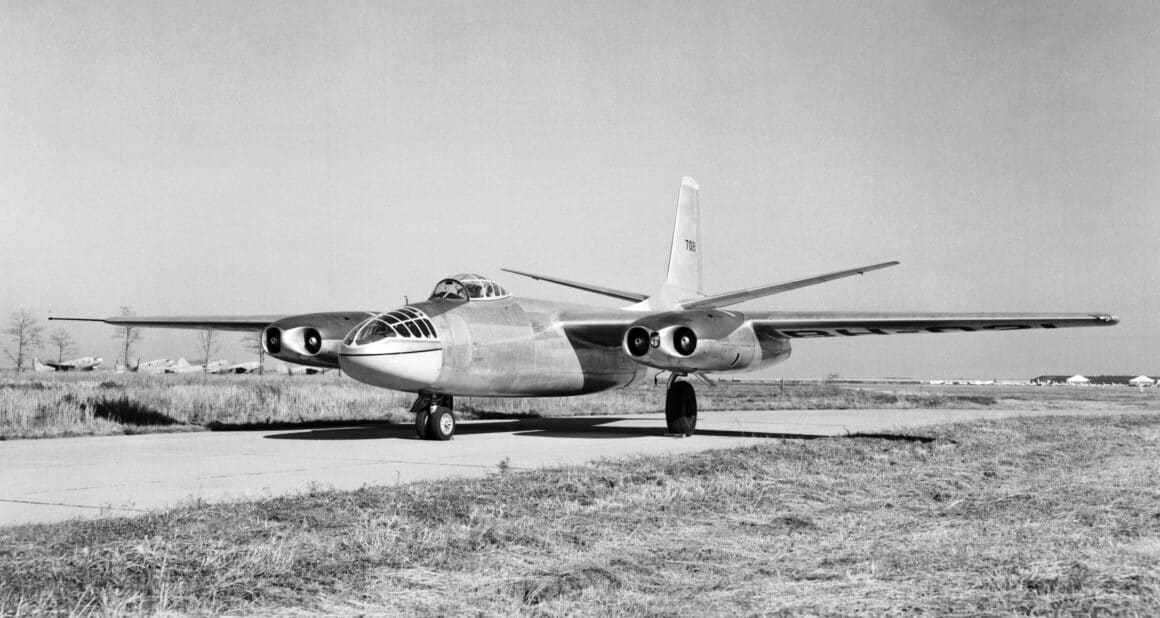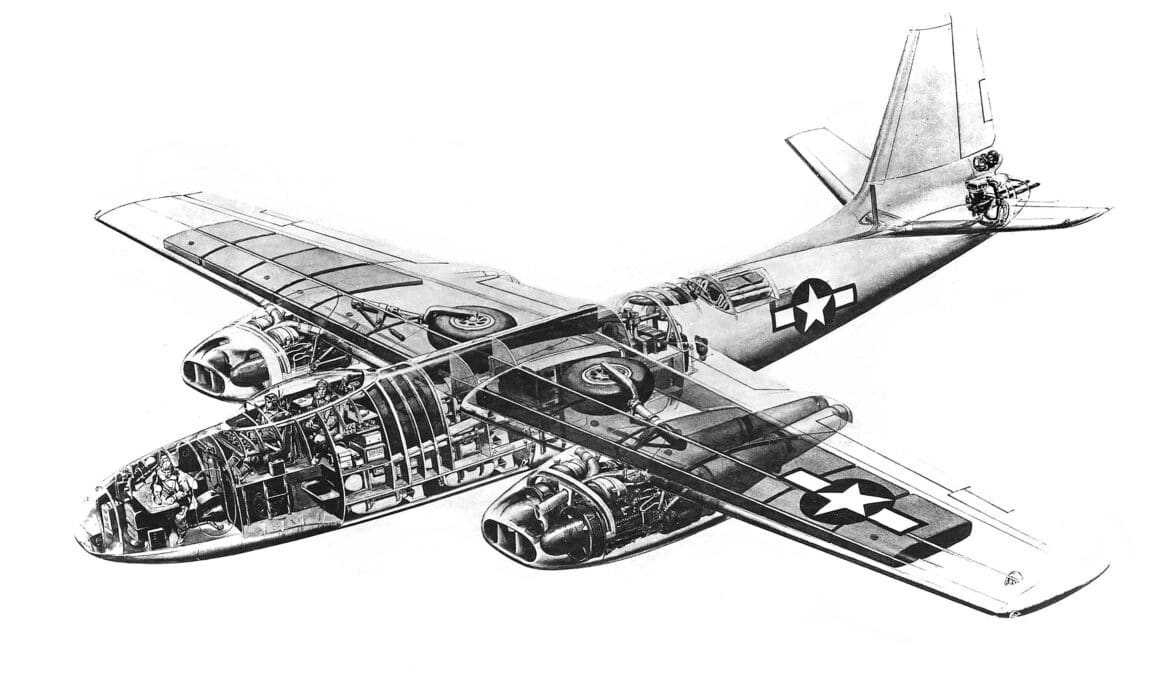North American’s B-45 Was the First of the “Class of 45” Jet Bombers, But It Didn’t Last
The North American B-45 Tornado racked up an impressive number for firsts. It was the United States Air Force’s (USAF) first 4 jet engine bomber and their first operational jet bomber. The B-45 was also the first jet powered bomber in the world to be refueled in midair. A B-45 became the first jet bomber to drop a nuclear weapon. But it was a time of firsts for jet-powered bombers. The B-45 was, for at least the first few years of its service existence, the only jet bomber game in town.

Based on a Blitz
The impetus for the B-45 can be traced to the world’s first jet-powered bomber- Luftwaffe’s Arado Ar 234 Blitz. When the Blitz was evaluated it was decided the US Air Army Air Force needed a similar bomber. The B-45 turned out to be much more like the Blitz than any of the other “Class of 45” bombers in development at the time- the Consolidated XB-46, the Boeing B-47, and the Martin XB-48. On 8 September 1944 North American Aviation began construction of three NA-130-based prototypes at their plant in Inglewood CA.

Somebody Had to Be First
When World War II ended in 1945 aircraft development programs were cut back or canceled outright in droves. The XB-45 and XB-46 were both going to be nearly ready to fly by mid-1946. The XB-47 and the XB-48 were both still many months away from seeing their first flights. After a relatively short battle between the XB-45 and the XB-46, the XB-45 came out on top. So a contract for accelerated production of B-45As was signed on 2 January 1947- even before the XB-45 flew for the first time.

Teething Troubles
Even though the XB-45 flew for the first time on 24 February 1947, and production B-45As entered service with the 47th Bombardment Group based at Barksdale Air Force Base (AFB) in Louisiana in April of 1948, the Tornado was never going to be the jet bomber Boeing’s B-47 eventually became. The second batch of B-45As were powered by uprated and more reliable General Electric J47 axial flow turbojet engines, solving one problem, but the jet’s other shortcomings were too much to overcome. Only 143 B-45s were built- 71 fewer than its nearest analogue- the Arado Ar 234. 38 of those 143 airframes were dedicated aerial reconnaissance platforms.

North American Designed
Design highlights of the B-45 included shoulder-mounted straight wings with the four engines mounted in pairs in nacelles under the wings, a conventional empennage with pronounced dihedral for the horizontal stabilizers to clear the engine exhaust turbulence, a tandem cockpit with ejection seats for the pilots, and tricycle landing gear. The crew consisted of the two pilots, a bombardier seated in a transparent nose, and a tail gunner sitting in the extreme tail of the aircraft.

